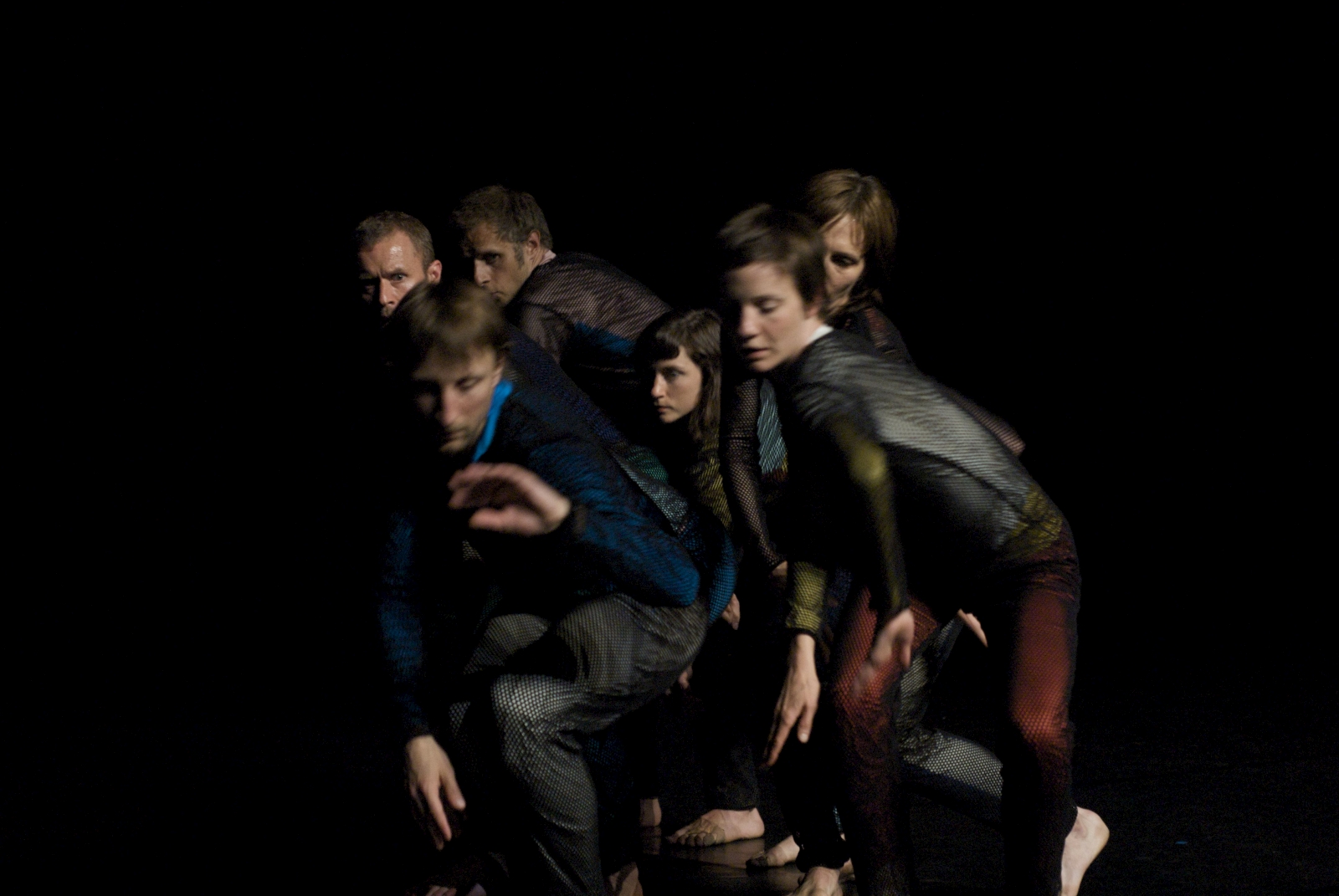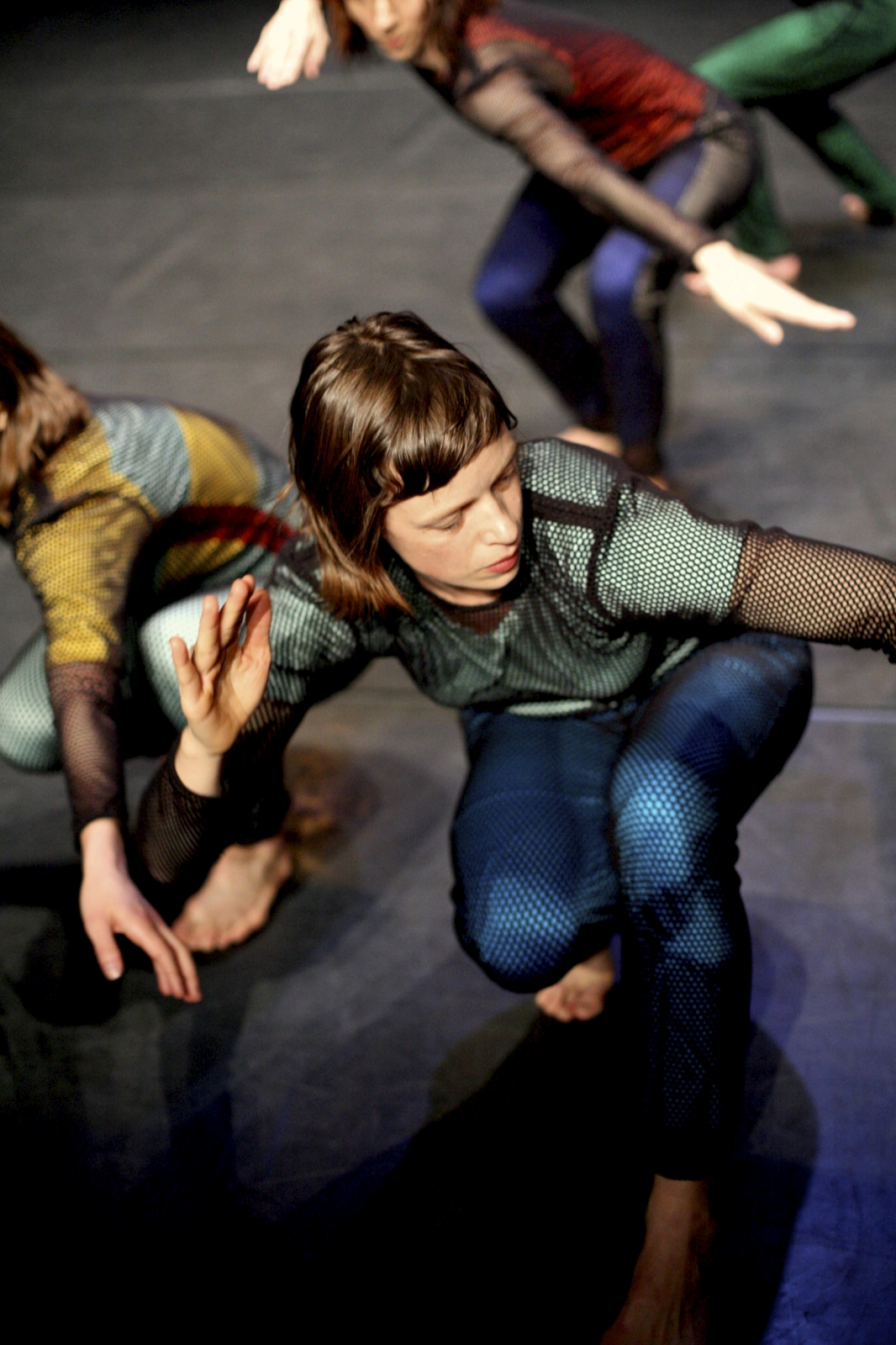
Accords
Accords is a choreographic composition that one experiences like a musical arrangement. The dancers “graft” themselves onto musical pieces, playing their bodies like instruments, and rendering the music “visible” through a complex network of individual and supra-individual actions and reactions. The dynamics, harmonies, melodies, and counterpoints, and even the sensual experience of musical interpretation are translated, amplified, or redirected through the body. The audience might think that they are watching choreography set to music. Nevertheless, the process of creating movement – improvised – proves here to be radically different. It’s a “democratic” process based on individual freedom and fixed attention to the other. A process that aims to achieve a choreographic complexity that far surpasses that of a set work. Thomas Hauert chooses to rely on the intuitive intelligence of the body and the group.
ZOO’s choreographic work is based on fundamental research into movement. Prompted by Thomas Hauert, the dancers set about leaving behind their bodily habits and, in a spirit of playful research, exploring the greatest possible variety of forms, rhythms, qualities and interactions with space and external forces.
One of the main methods used to open up possibilities of movement is improvisation. It is conceived of as a means of unleashing the body’s potential from limitations imposed by the mind. It is not completely free improvisation, because a body without constraints would gravitate towards its habitual paths. In contrast, directed improvisation is improvisation where tasks, rules and forces are imposed to upset these habits. Improvisation allows complex movements to be carried out involving so many factors that it would be impossible to repeat them or write them down.
It is not just about deconstructing or breaking down forms and codes, but rather about returning to the body’s most basic state and beginning there, taking anatomy as a starting point. After being temporarily divorced from their customary movement routines, ZOO’s dancers endeavour to incorporate principles of direction. The principles are practised time and again, so that all possibilities and subtleties can be derived. In this way, a new virtuosity is achieved.
Beyond the level of the individual, ZOO is also developing group work on the “body” composed of all the dancers – a kind of “social body”. If exploring the individual body aims to express diversity, group work strives for cohesion, communication and connection. Thomas Hauert coordinates the dancers’ bodies through different modes of organising time and space. As ZOO has evolved, these principles have become increasingly flexible and reactive, favouring an order guaranteed by the trust each dancer has in the others, rather than by the choreographer’s authority.
Concept & direction Thomas Hauert
Created & presented by Thomas Hauert, Martin Kilvady, Sara Ludi, Chrysa Parkinson, Zoë Poluch, Mat Voorter and Samantha van Wissen
Lighting & scenography Jan Van Gijsel
Sound design and original music Peter Van Hoesen
Music Vicente Amigo, El Mandaito (Bulerias) ; Roland Moser, Kabinett mit Vierteltönen: Noch ein perpetuum mobile ; Knut Nystedt, Immortal Bach ; Sergej Rachmaninov, Prelude Op. 23, No. 10 in G Flat & Piano Sonata No. 2 in B Flat Minor ; Maurice Ravel, La Valse ; Jean C. Roché, Dawn Chorus At Bialowieja Forest, Concert de crapauds & Concerts de la nuit: Concerts des loups en forêt canadienne ; Erik Satie, Première Gymnopédie ; Dick Van Der Harst, Drama & De Breton ; Stefan Wolpe, Marsch
Costumes OWN
Production ZOO/Thomas Hauert
Coproduction Kunstenfestivaldesarts, Brussels / Kaaitheater, Brussels / PACT Zollverein, Essen / Festival Alkantara, Lisbon / Mercat de les Flors, Barcelona
Support Flemish Government / Vlaamse Gemeenschapscommissie / Pro Helvetia – Swiss Arts Council / Ein Kulturengagement Lotteriefonds Kanton Solothurn
Thanks to Charleroi Danse
Project co-produced by NXTSTP, with the support of the Culture Programme of the European Union





